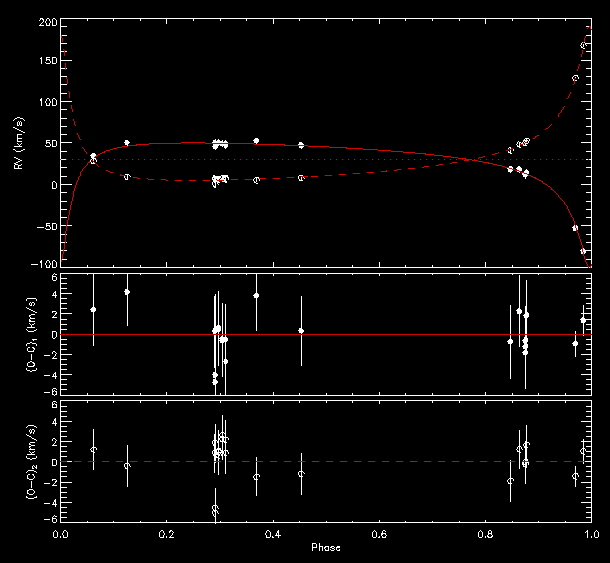LV Her
This is a double-line eccentric eclipsing binary star (Torres et al., 2009, AJ, 138, 1622) composed of two F9V stars with M~1.1 Msun.
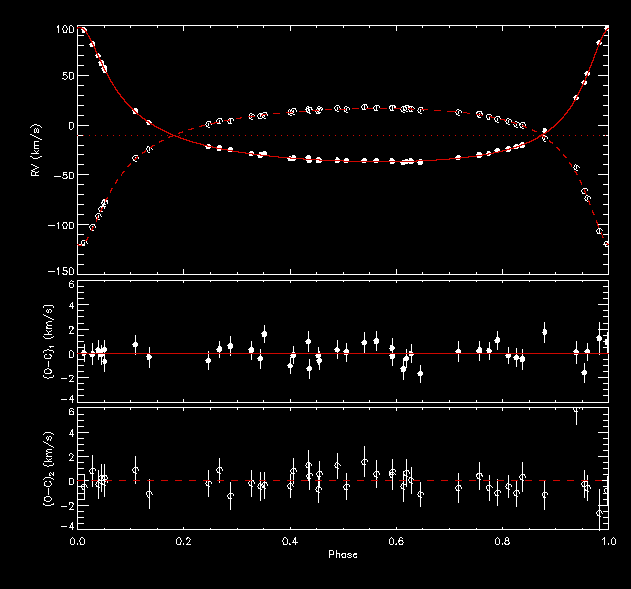
GU Boo
This is a double-line eclipsing binary star (López-Morales & Ribas, 2005, ApJ, 631, 1120) composed of two nearly-equal low-mass main sequence stars (M~0.6 Msun) in a circular orbit with a short orbital period of 11.7 hours.
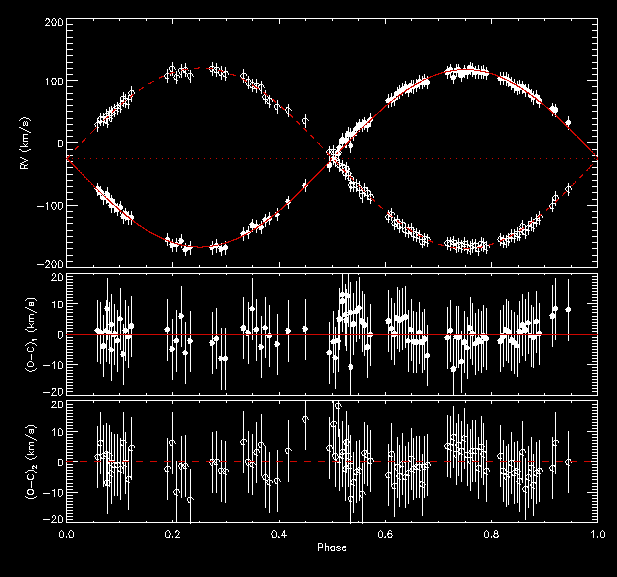
GJ 1046
This system contains a brown dwarf in an eccentric orbit around an M dwarf primary (Kurster et al., 2008, A&A, 483, 869). This system is single-lined because of the low luminosity of the brown dwarf secondary.
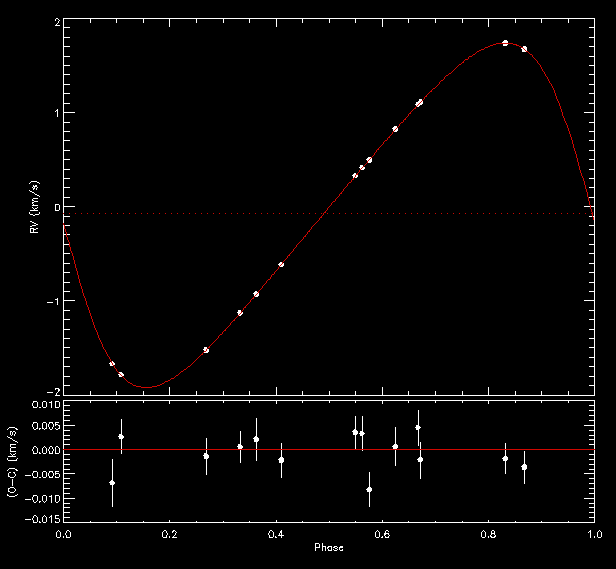
HR 3725
This a single-lined spectroscopic binary containing a G2 III primary (Beavers & Salzer, 1985, PASP, 97, 355). Presumably, the secondary is a dwarf star with a late spectral type in a circular orbit.
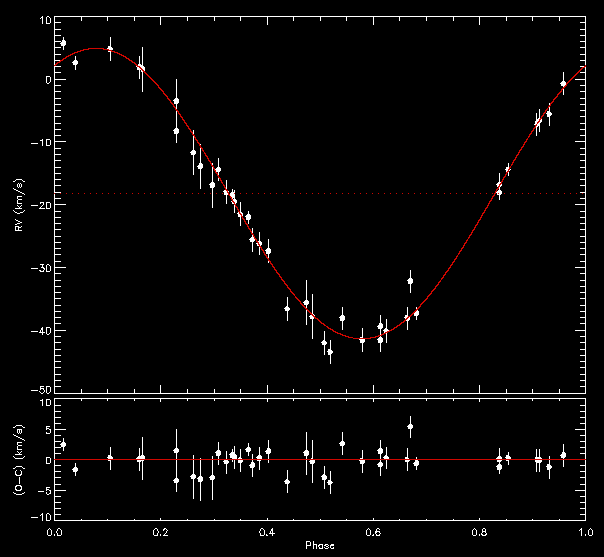
HD 37605
This was the first exoplanet discovered by the Hobby-Eberly Telescope (HET) (Cochran et al., 2004, ApJ, 611, 133). The planet has a very eccentric orbit (e=0.737) with a period of 54 days and a mass of m sin i=2.84$ Mjup.
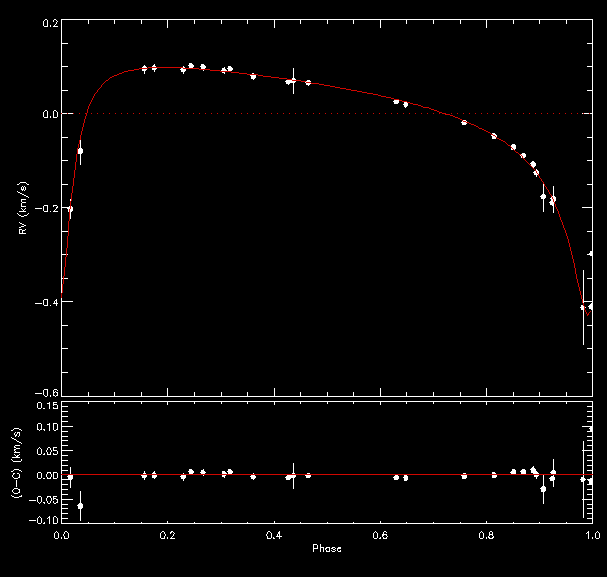
Kepler 78b
This is the first Earth-like transiting exoplanet discovered in the Kepler mission data (Sanchis-Ojeda et al., 2013, ApJ,774, 54, Howard, et al., 2013, Nature, 503, 381). It orbits its parent solar-like star in a nearly circular orbit and, due to their small mass-ratio, the HARPS-N dataset (Pepe, et al., 2013, Nature, 503, 377) has a very low signal to noise ratio.
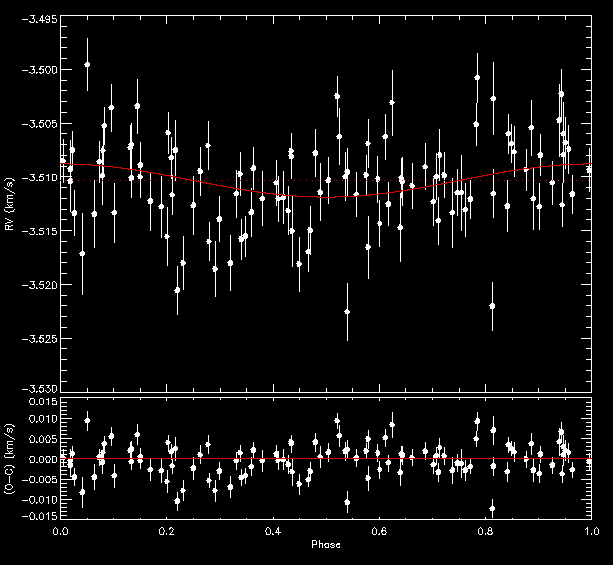
sigma Ori A
In 2011 it was discovered (Simón-Díaz et al., 2011, ApJ, 742, 55) that the A component in the sigma Ori binary system was indeed a highly eccentric spectroscopic binary, thus probing that sigma Ori system is a triple system. Our fit to their data is shown.
